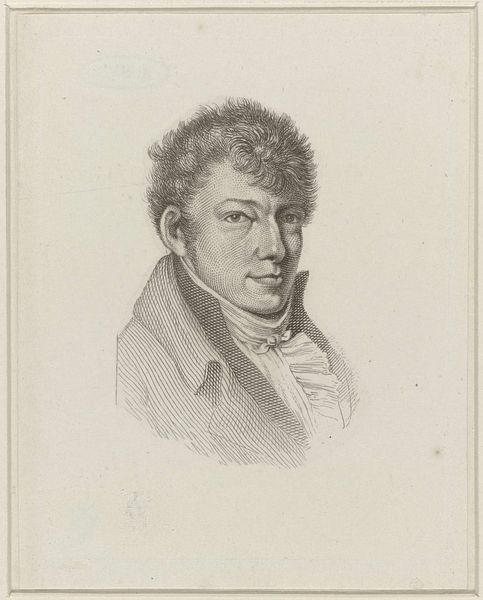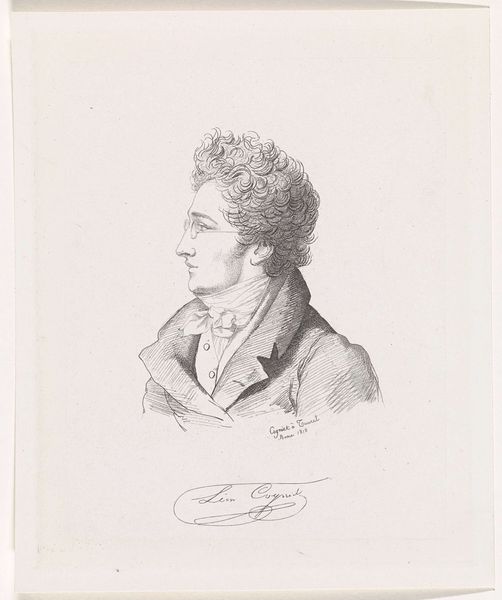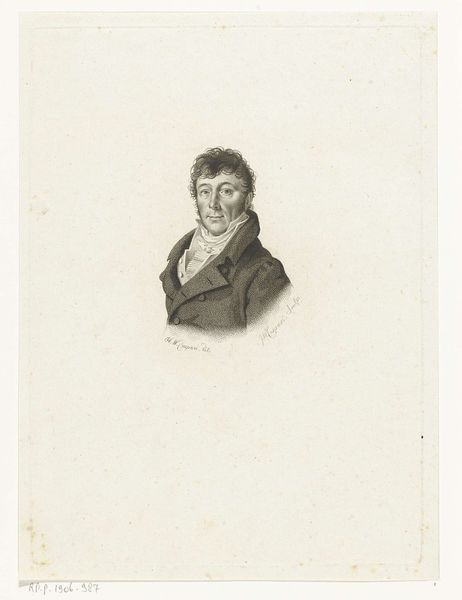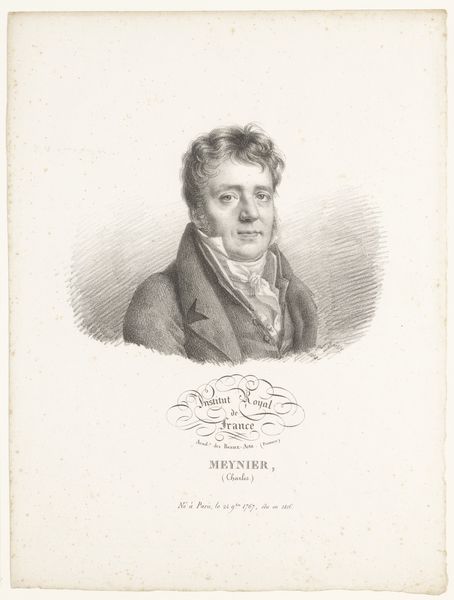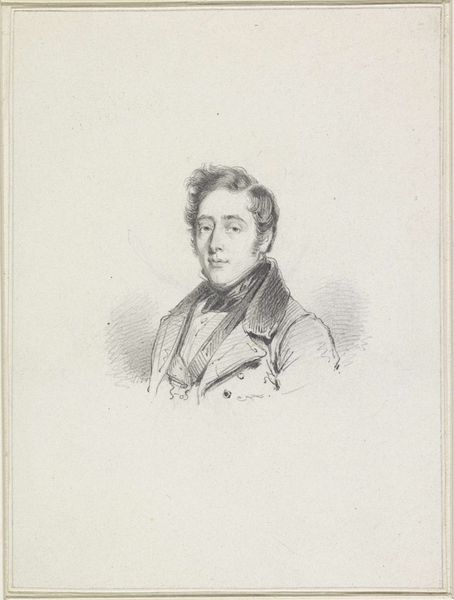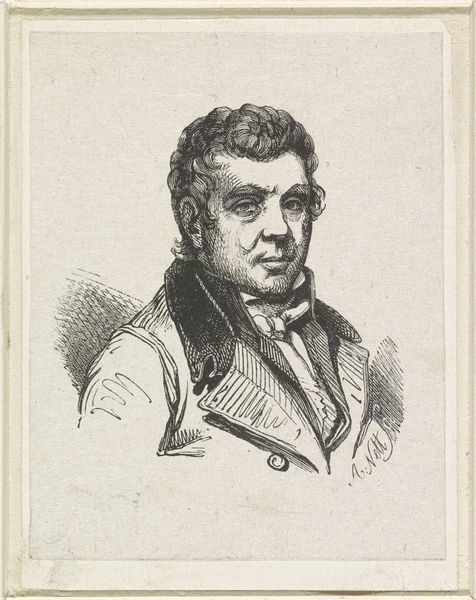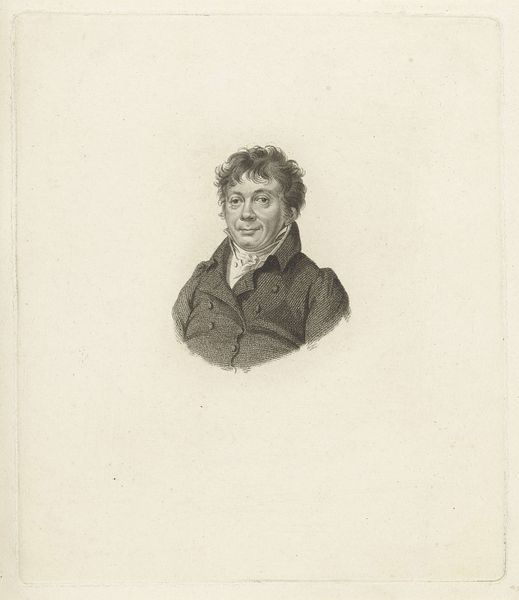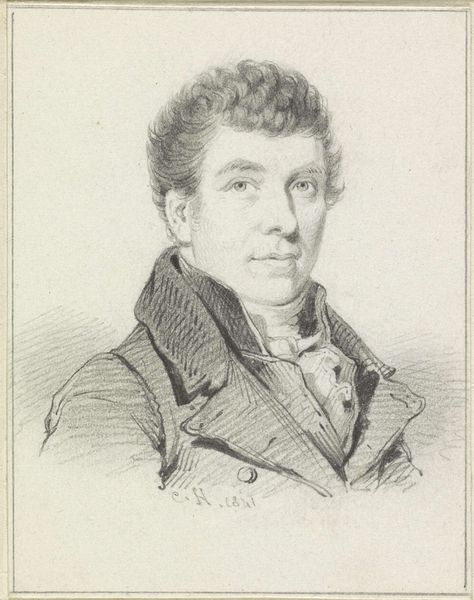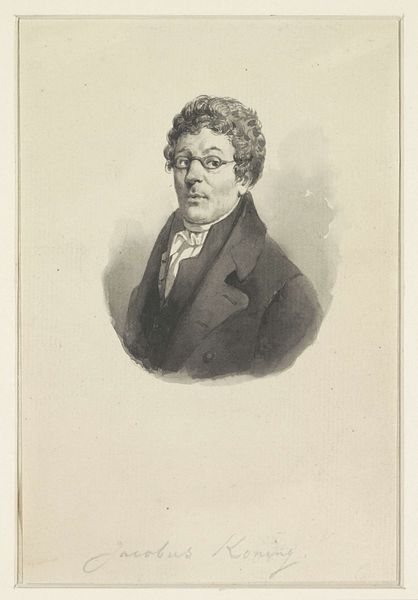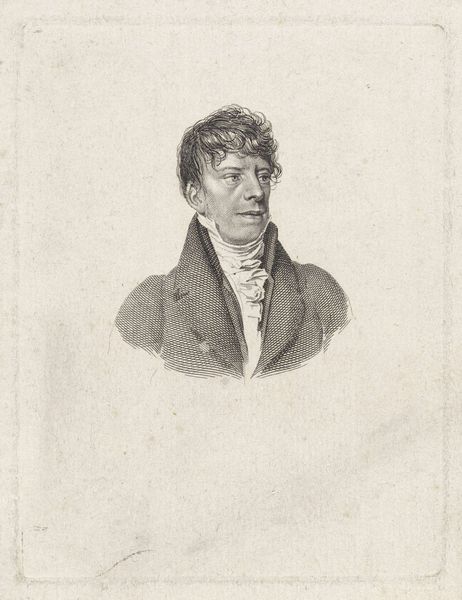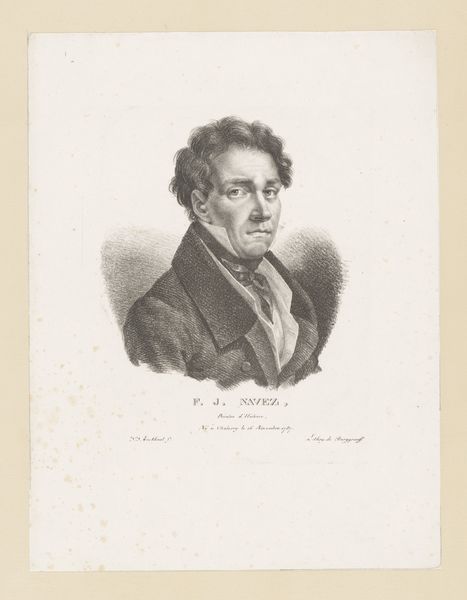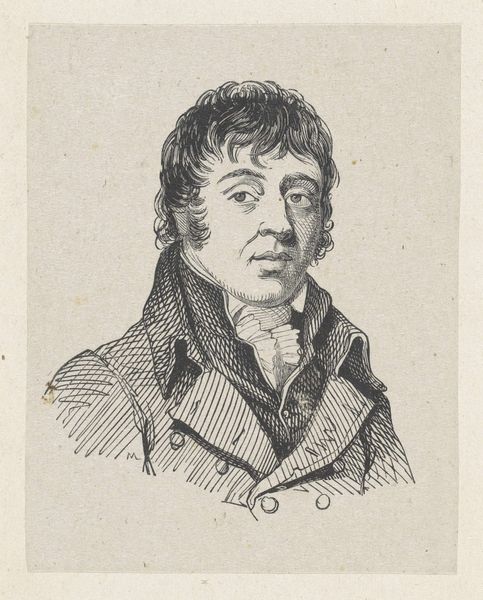
drawing, pencil
#
portrait
#
pencil drawn
#
drawing
#
pencil sketch
#
charcoal drawing
#
pencil drawing
#
romanticism
#
pencil
#
portrait drawing
#
realism
Dimensions: height 98 mm, width 77 mm
Copyright: Rijks Museum: Open Domain
Editor: So here we have Coenraad Hamburger’s 1841 pencil portrait of Wouter Johannes van Troostwijk. It's a beautifully rendered drawing; you can really feel the texture of the paper. There’s almost a photographic quality in the details around the face. How do you see this portrait fitting into the art world of its time? Curator: Well, let’s think about 1841. Photography was emerging, influencing how people viewed realism in portraiture. Drawing, especially pencil, offered accessibility and immediacy. Was this portrait intended for a private patron, perhaps, to memorialize a relationship? How did social class play into commissioning or owning portraits like these? Editor: That’s a good point; I hadn’t thought about the social implications. It feels like a very personal and intimate image, though. Curator: Precisely. The gaze of the subject confronts the viewer, engaging directly. What does this directness suggest about the artist’s intention and the social dynamic between artist and sitter at that time? Was it simply a factual likeness, or something more intimate and communicative? Editor: Maybe the realism itself was a social statement, about the emerging middle class wanting to be seen in a more direct and less idealized way. Almost like a…democratic portrait. Curator: That's an astute observation. Think of the grand, idealized portraits of aristocracy from earlier periods. How does this image contrast with that tradition, and what does it signify about changing social values? Editor: I guess, seeing it that way, it becomes more than just a likeness; it's part of a broader cultural shift towards a different way of representing people, not just power. It's really opened my eyes to thinking about art as part of a much larger picture, culturally. Curator: Exactly, and remember how museums and galleries started collecting and exhibiting art like this, solidifying its place in the evolving art historical narrative. The "who", "why" and "for whom" behind an artwork is so essential. Editor: That definitely gives me a lot to consider, going forward. Thanks for the new perspective.
Comments
No comments
Be the first to comment and join the conversation on the ultimate creative platform.
